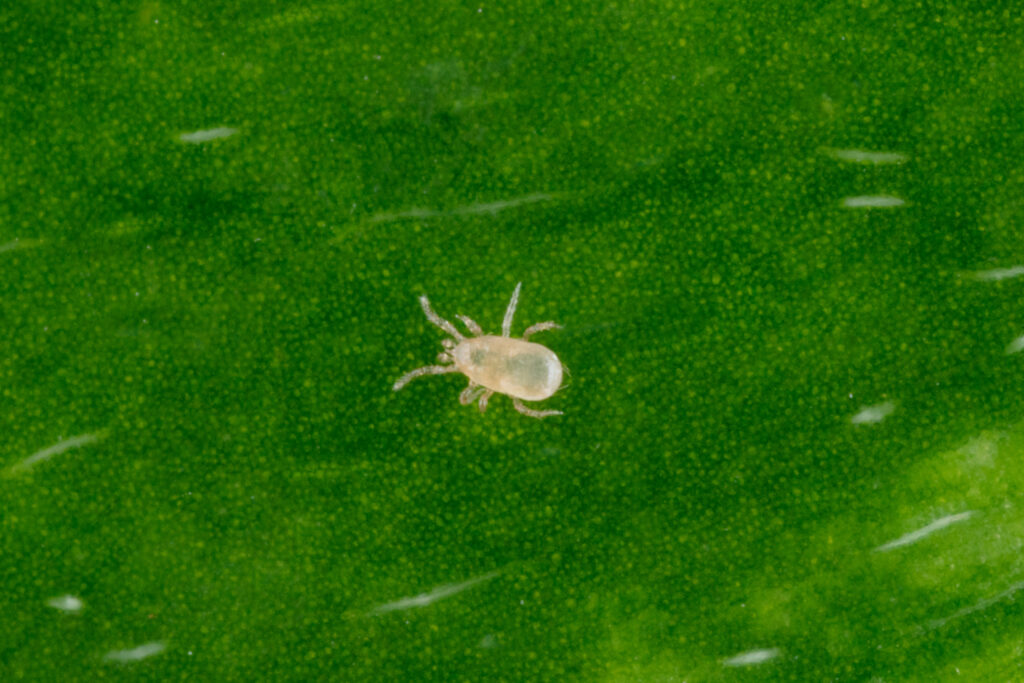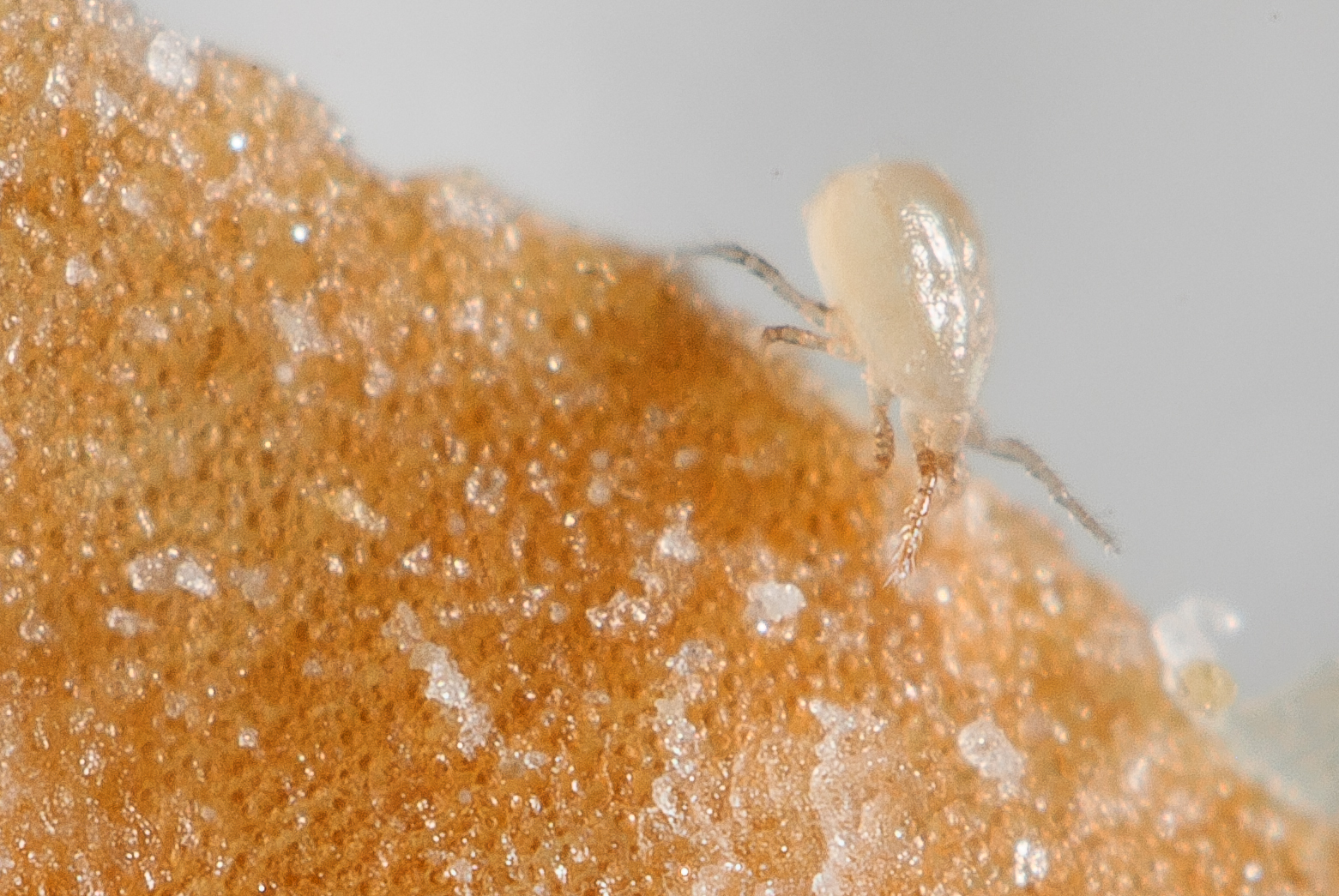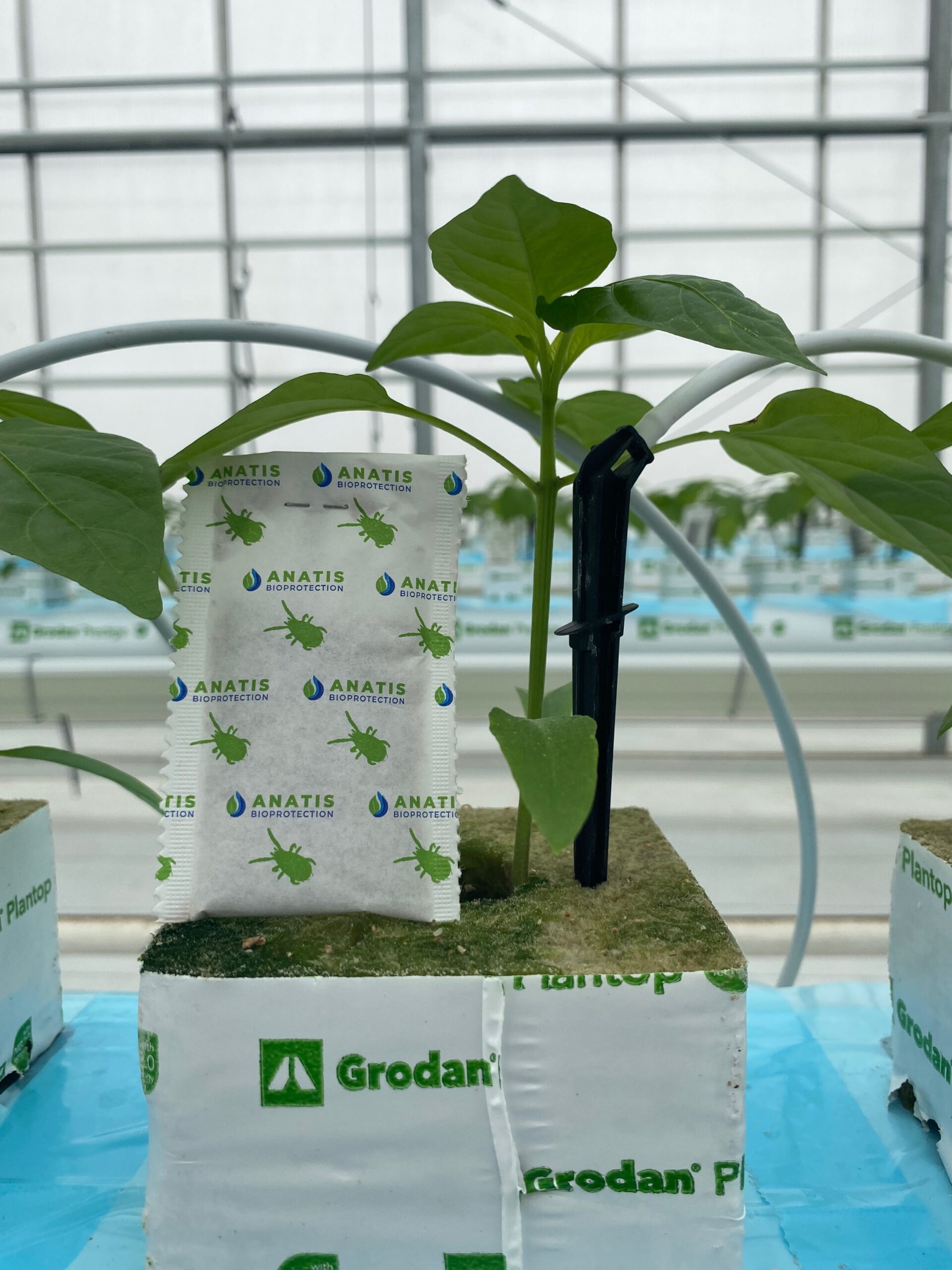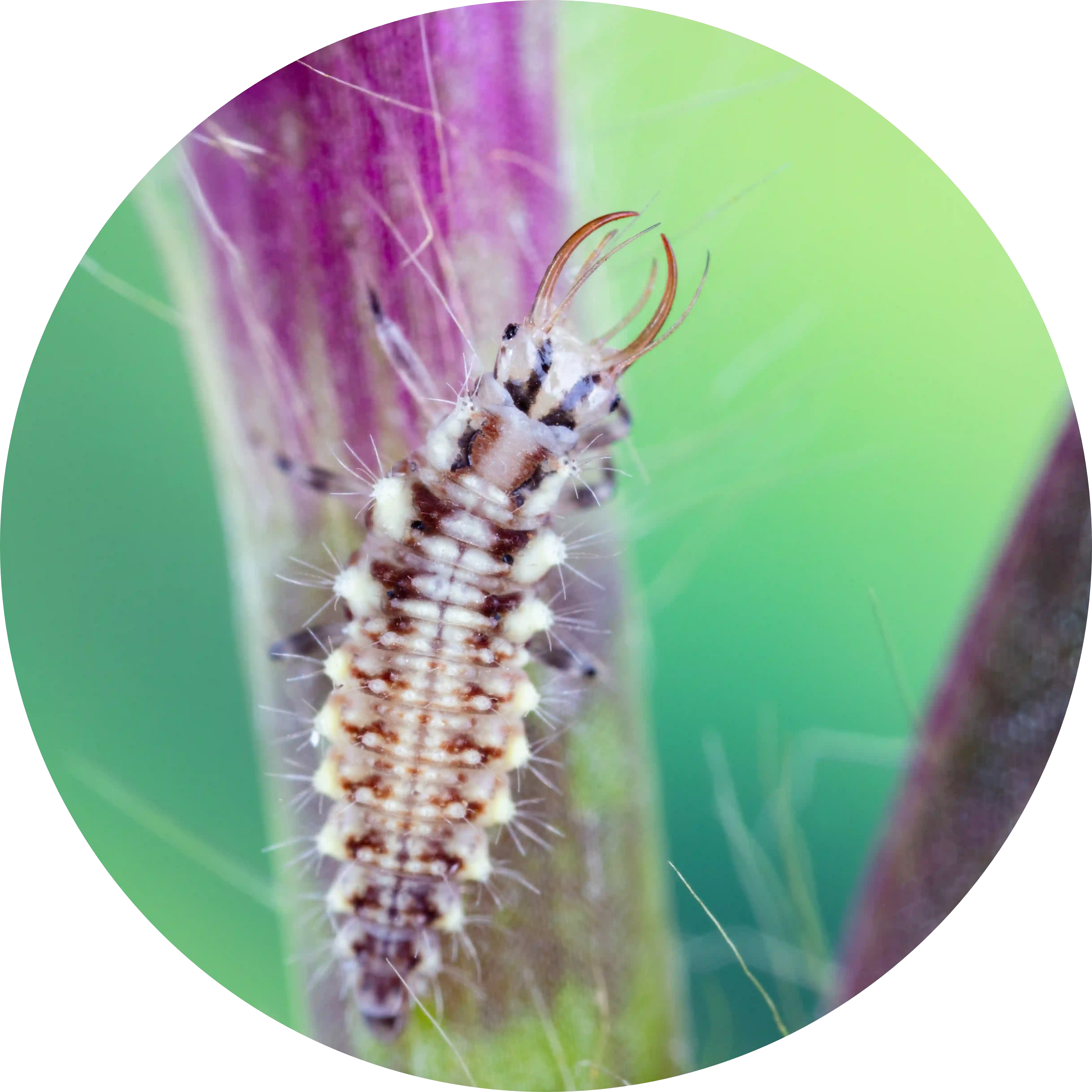





Neoseiulus cucumeris
This product is unavailable in you country
For more information about this product, please contact us.
Product description


Targeted crops
- Greenhouse Ornamentals
- Market garden crops:
- Cucumbers
- Tomatoes
- Peppers, etc.
- Interior and exterior:
- Planters and other flower boxes

Targeted pests
- Onion thrips (Thrips tabaci)
- Western flower thrips (Frankliniella occidentalis)
- Eastern flower thrips (Frankliniella tritici)
- Cyclamen (or strawberry) mite (Phytonemus pallidus)
- Broad mite (Polyphagotarsonemus latus)
- Spruce spider mite (Oligonychus ununguis)

Application Instructions
Using sachets
To be hung on foliage. The sachets are made of water-resistant paper containing a mixture of predatory mites (Cucumeris), flour mites (prey), and substrate (bran). The sachet becomes a kind of mini-farm that gradually produces predatory mites for 4 to 6 weeks, depending on environmental conditions.
Using tubes
To be sprinkled on foliage. Tubes with bran contain predatory mites at several stages of development (eggs, juveniles, and adults) and flour mites (as prey). Whereas tubes with vermiculite contain only predatory mites (adult and juvenile stages).

Storage Instructions
For successful operations, ensure plenty of fresh air to avoid an increase in hazardous carbon dioxide levels.







Description
Neoseiulus cucumeris is a highly effective predatory mite that provides dependable pest control in ornamentals, fruits and market gardens. In addition to controlling Onion thrips (Thrips tabaci) and Western flower thrips (Frankliniella occidentalis), it can also reduce two-spotted spider mites, cyclamen mites, broad mites as well as Schizotetranychus species populations – when deployed with other beneficial soil dwellers such Stratiolaelaps scimitus or Dalotia coriaria! With integrated management employed during the ideal weather conditions for up to 3 weeks – this predator has proven its value time again against garden pests.